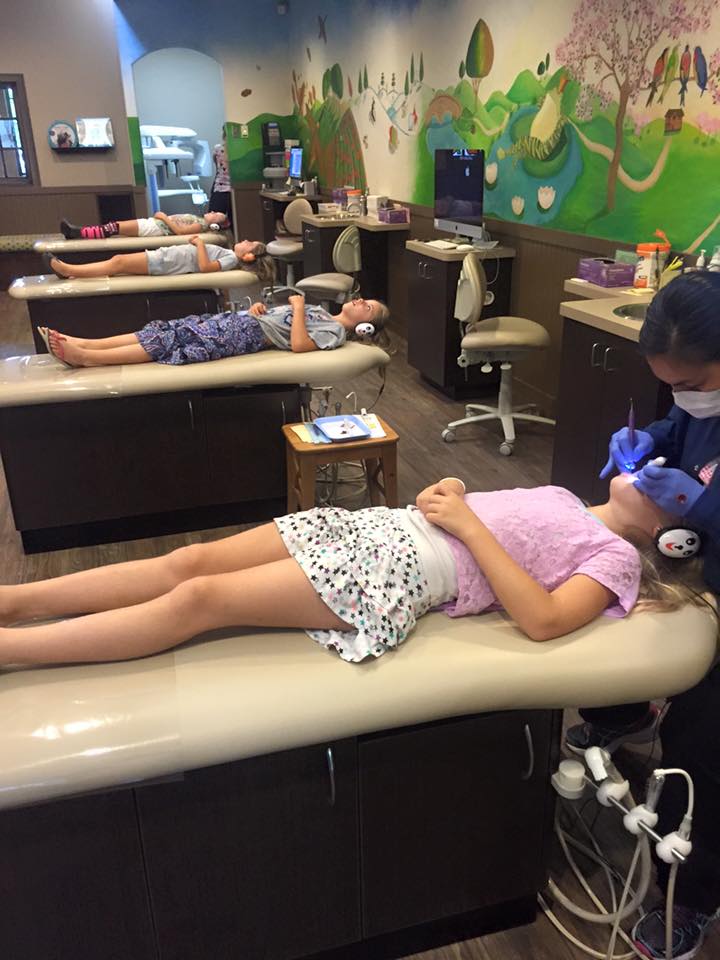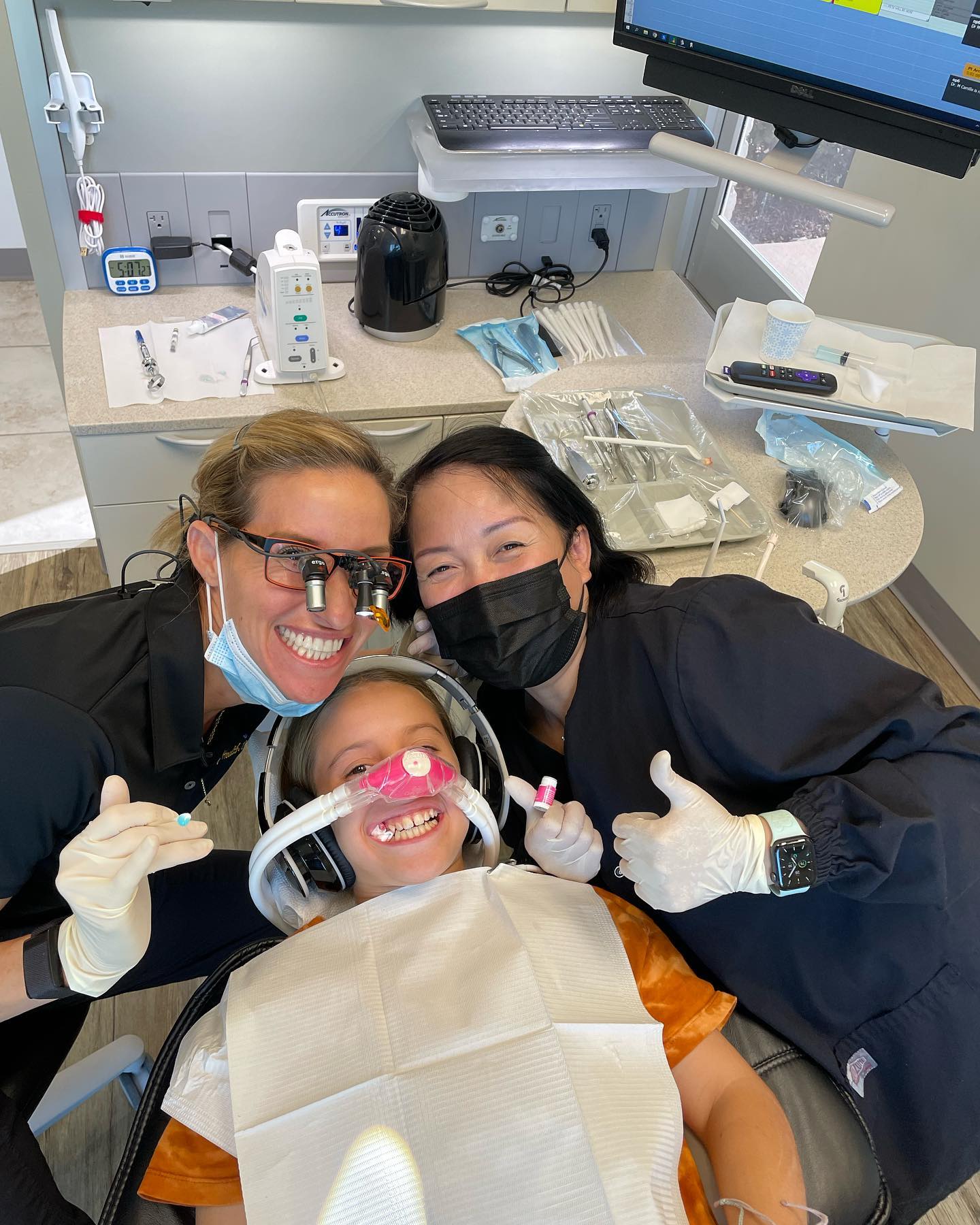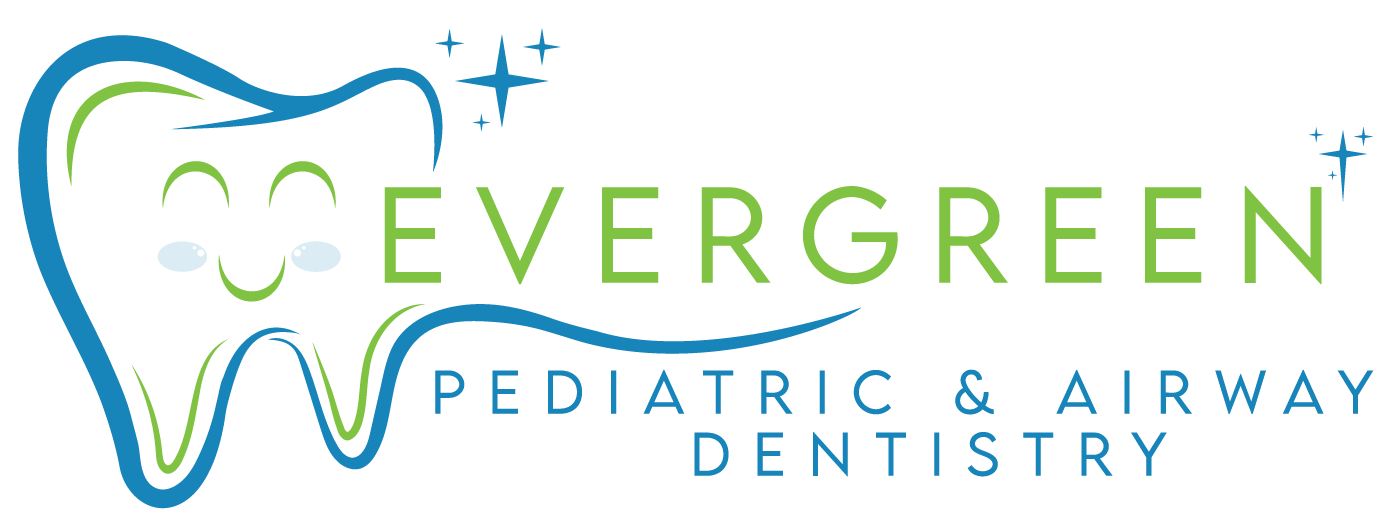How Sleep Dentistry Promotes Positive Dental Experiences
For many children, a visit to the dentist evokes fear and anxiety, transforming what should be a routine check-up into a nerve-wracking ordeal. However, the advent of sleep dentistry offers a beacon of hope for both parents and young patients alike. This innovative approach to dental care is revolutionizing visits to the dentist’s office, making them more comfortable, less stressful, and overall more positive experiences. In this blog, we’ll explore how sleep dentistry is paving the way for happier, healthier smiles among kids, ensuring they grow up without the common dental fears many adults today can relate to.
Understanding Dental Anxiety in Children
For many children, the mere thought of a dental visit triggers genuine fear, not just a bit of nervousness. This fear can originate from several places, including negative stories they’ve heard, any previous unsettling dental visits, or the daunting appearance and sounds of dental equipment. This apprehension is troubling for the child and can interfere with their willingness to go to dental check-ups, which is crucial for maintaining their oral health over time. Identifying the causes of their fear is critical in managing it effectively. Dentists have the understanding and tools, such as sedation dentistry, at their disposal to craft a calming atmosphere that diminishes these fears. This approach can transform a dental visit from a stressful ordeal into a calm, positive experience for children.
Understanding Sedation Dentistry: A Guide for Patients
Sedation dentistry, often referred to as sleep dentistry, offers a way to undergo dental procedures comfortably, using medication to ease anxiety and pain. The process can vary from light sedation, where the patient remains awake but relaxed, to full unconsciousness achieved with general anesthesia. Each sedation level is custom-selected based on the patient’s specific needs and the dental operation’s demands, prioritizing both safety and comfort.
The integration of sedatives and pain control methods significantly lessens the stress and discomfort frequently linked to dental appointments. This approach is particularly beneficial for children who experience dental anxiety, helping to prevent the development of deep-seated fears of dental care. By making the experience less daunting and prioritizing patient comfort, sedation dentistry contributes to more favorable dental health outcomes and shifts attitudes towards dental visits to a more positive light early in life.

Children Sleep Dentistry
The Advantages of Sleep Dentistry in Pediatric Dental Care
Sleep dentistry brings a wealth of benefits to pediatric patients, transforming dental appointments into more positive experiences. The key benefit lies in its ability to significantly lower stress and fear levels in children, thanks to sedation methods that help patients stay serene and comfortable throughout their visit. In many instances, children may have little to no recollection of the procedure, aiding in eliminating the cycle of anxiety linked to dental appointments. This can encourage them to keep up with their dental health care regularly and maintain a healthy perspective towards dental professionals.
Sleep dentistry holds particular value for children who have special needs or those who find it challenging to remain seated for long durations. It assures that these children can undergo necessary dental procedures without experiencing stress or discomfort. By reducing adverse experiences at the dentist from an early age, sleep dentistry is instrumental in fostering ongoing oral health and overall wellness.
Comparing Traditional Dentistry with Sleep Dentistry
When evaluating the differences between traditional dentistry and sleep dentistry, it becomes evident that each approach has its unique advantages, tailored to meet varying patient needs. Traditional dentistry relies on the dentist’s skill in handling the patient’s discomfort and fear through non-pharmacological methods, such as communication, distraction, and a calming atmosphere. This conventional approach fosters an environment where children can gradually overcome their fears through positive reinforcement and gradual familiarization with dental procedures.
Contrastingly, sleep dentistry introduces a pharmacological component to address dental anxiety, utilizing sedatives to create a stress-free experience. This method is particularly advantageous for patients who have had traumatic dental experiences in the past or who suffer from severe anxiety, making traditional approaches less effective. Sleep dentistry ensures that necessary dental work can be completed in fewer visits and with less psychological stress for the patient.
Ultimately, the choice between traditional and sleep dentistry depends on the individual needs of the child, including their level of anxiety, the complexity of the dental work required, and their past experiences with dental care. While traditional dentistry may suffice for some, sleep dentistry offers a valuable alternative for those in need of a more nuanced approach to managing dental anxiety.
Tips for Parents Considering Sleep Dentistry for Their Children
When contemplating sleep dentistry for a child, parents should undertake considerable preparation and research to ensure the best possible experience. Here are some vital tips for those considering this avenue for their child’s dental care:
- Research Qualified Dentists: Start by finding dentists with specialized training and certification in sleep dentistry. Look for reviews, ask for recommendations, and verify the dentist’s experience and qualifications in handling pediatric sleep dentistry cases.
- Consultation and Open Communication: Schedule a consultation with the dentist to discuss your child’s medical history, dental anxieties, and the specifics of the proposed treatment. This session provides an excellent opportunity to address any concerns and understand the sedation process fully.
- Understand Sedation Levels: Familiarize yourself with the various levels of sedation used in sleep dentistry and discuss with the dentist the most appropriate level for your child based on their anxiety level and the dental procedures required.
- Preparation for the Procedure: Follow the dentist’s instructions on how to prepare your child for sedation, including dietary restrictions or sleep schedules. Proper preparation can significantly impact the smoothness of the procedure and recovery.
- Discuss Recovery and Aftercare: Engage in a thorough discussion about what to expect during the recovery phase post-procedure, including potential side effects of sedation, pain management, and dietary restrictions.
- Consider Psychological Comfort: Apart from the practicalities of the procedure itself, consider how to support your child emotionally. Discuss strategies with the dentist on how to explain the process to your child in a reassuring and child-friendly manner.
- Evaluate Costs and Insurance Coverage: Ensure you understand the costs involved in sleep dentistry and check with your insurance provider about what is covered under your policy. Discuss these financial aspects with the dental office to avoid any surprises.

Children Sleep Dentistry Service
What to Expect Before, During, and After the Dental Visit
- Before the Dental Visit: Preparation begins well before reaching the dental office. It’s essential for parents to talk to their children about the visit in a positive, reassuring manner, explaining that the dentist is there to help keep their teeth healthy. Ensure that you follow all pre-visit instructions provided by the dentist, especially concerning fasting if sedation is to be used. It’s also beneficial to prepare a list of questions or concerns you might have to discuss with the dentist before the procedure.
- During the Dental Visit: On the day of the appointment, parents should strive to keep the atmosphere calm and stress-free. Upon arrival at the dental office, the dental team will usually review the procedure with the parent and child, ensuring everyone understands what will happen. If sleep dental care is being employed, the dental team will administer the sedation, closely monitor the child’s comfort and safety throughout the procedure, and perform the necessary dental work while the child is sedated.
- After the Dental Visit: Recovery from the dental procedure can vary depending on the type of sedation used and the nature of the dental work. The dental team will provide post-procedure care instructions, which may include guidance on eating and drinking, managing pain, and any signs to watch for that might indicate a need to contact the dentist. It’s common for children to feel groggy or sleepy after sedation, and parents should plan for a quiet day of recovery. Monitoring the child’s oral hygiene and scheduling follow-up visits as recommended by the dentist are crucial steps in ensuring long-term dental health.
Preparing for a Sleep Dentistry Appointment
Preparing for a sleep dentistry appointment involves several crucial steps to ensure the safety and comfort of the child undergoing dental work. It is essential for parents and guardians to be fully engaged in the preparation process to minimize anxiety and ensure a smooth experience.
- Familiarization: Before the appointment, help your child become familiar with the concept of visiting the dentist and what sleep dentistry involves. Use simple, positive language to explain why the dentist is necessary and what they can expect in a child-friendly manner.
- Dietary Restrictions: Adhere strictly to the dentist’s guidelines regarding eating and drinking before sedation. This often means no food or drink past midnight the day before the appointment, but instructions may vary based on the type of sedation.
- Comfort Items: Consider bringing a favorite toy, blanket, or other comfort items to the appointment. These can help soothe your child and reduce anxiety.
- Clothing: Dress your child in comfortable, loose-fitting clothes to ensure their comfort during and after the procedure. This can also facilitate easy access for the dental staff to monitor vitals if necessary.
- Post-Procedure Plan: Plan for your child’s recovery time at home following the appointment. They may be groggy or sleepy, so create a comfortable resting area and plan for a day of quiet activities. Make sure to follow any specific post-care instructions given by the dentist, especially regarding eating and drinking.
- Emergency Contacts: Ensure that the dental office has all necessary emergency contact information and is aware of any medical conditions or allergies your child has. This is crucial for the safe administration of sedatives and for handling any potential emergencies.
- Questions and Concerns: Write down any questions or concerns you might have about the procedure, sedation, recovery, or anything else. Bringing these to the appointment will help you feel more prepared and ensure that you have all the information you need.
Post-Procedure Care and Considerations
After your child has undergone dental work with sleep dentistry, there are several important steps and considerations to ensure a smooth recovery and minimize any discomfort. Adhering to these guidelines is crucial for the health and well-being of your child.
- Monitor Recovery: In the immediate hours following the procedure, closely monitor your child for any unusual symptoms or reactions to the sedation. It’s normal for them to be sleepy or slightly disoriented, but contact your dentist if you notice anything concerning.
- Pain Management: Your dentist may recommend or prescribe pain relief medication to manage any discomfort after the procedure. Follow the dosage instructions carefully, and don’t hesitate to contact your dentist if the pain seems unmanageable or if you have concerns about medication.
- Hydration and Nutrition: Your child may have restrictions on what they can eat or drink following the procedure. Start with clear liquids to ensure they stay hydrated and gradually reintroduce soft foods as recommended by the dentist. Avoid hot drinks or hard, crunchy foods that could irritate the treated area.
- Oral Hygiene: Maintaining oral hygiene after dental work is important, but be gentle around the site of the procedure. Your dentist will provide specific instructions on how to care for your child’s teeth and gums during the recovery period to avoid any complications.
- Follow-Up Visits: Schedule any follow-up appointments as recommended by your dentist to monitor recovery and address any ongoing dental needs. These visits are crucial for ensuring that your child’s teeth remain healthy and that any potential issues are addressed promptly.
- Observation for Complications: Keep an eye out for any signs of infection or complications, such as excessive bleeding, severe pain, or swelling. Contact your dentist immediately if you have any concerns.

Sleep Dental Care
Debunking Myths and Addressing Concerns
When it comes to sleep dentistry, especially for children, it’s common for parents to encounter myths and misconceptions that can cause unnecessary worry. Understanding the facts can help alleviate these concerns and ensure a smoother experience for both child and parent.
- Sleep Dentistry is Risky for Children: The safety of sedation dentistry is a top priority for dental professionals. With advancements in medical technology and strict guidelines for administering sedation, the risks are minimized. Pediatric dentists are extensively trained in sedation techniques and are equipped to handle emergencies, making sleep dentistry a safe option for most children needing dental procedures.
- Children Will Experience Significant Pain During and After the Procedure: One of the primary benefits of sleep dentistry is the reduction of pain and discomfort during dental procedures. While some children may experience mild discomfort or soreness after the procedure as the anesthesia wears off, this can typically be managed with over-the-counter pain medication or those prescribed by the dentist, following their guidance closely.
- Sedation Can Lead to Long-term Health Issues: There is no evidence to suggest that sedation dentistry, when administered properly, leads to long-term health problems. The dental team closely monitors the child throughout the procedure to ensure their safety, and any sedatives used are selected based on their proven safety record and effectiveness.
- Only Major Dental Procedures Require Sleep Dentistry: Sleep dentistry is not exclusive to major dental operations. It can be beneficial for children who experience high levels of anxiety during dental visits, have a low pain threshold, or need to undergo multiple procedures at once. This approach helps make the experience less traumatic and more manageable for both the child and the dentist.
- Recovery From Sedation is Long and Complicated: Most children recover from the sedative effects relatively quickly, with normalcy returning within a few hours after the procedure. While there may be some grogginess or sleepiness initially, following the post-procedure care instructions provided by your dentist will ensure a smooth and straightforward recovery.
In summary, sleep dentistry presents a valuable option for providing dental care to children in a manner that prioritizes their comfort and safety. By dispelling common myths and addressing concerns with accurate information, parents can feel more confident in the decision to pursue sedation dentistry for their child’s dental needs. It’s essential to work closely with a pediatric dentist who is skilled and experienced in sleep dentistry to ensure the best possible outcome for the child. Remember, the ultimate goal of sleep dentistry is to promote a positive and less stressful dental experience, contributing to the long-term oral health and wellbeing of your child. Keeping open lines of communication with your dental care provider and following their expert guidance will help make the process as smooth and beneficial as possible.
Evergreen Pediatric Dentistry
https://www.google.com/maps?cid=14720788683151219551
12910 Totem Lake Blvd NE #103, Kirkland, WA 98034, United States
(425) 814-3196
https://evergreenkidsdentist.com/


